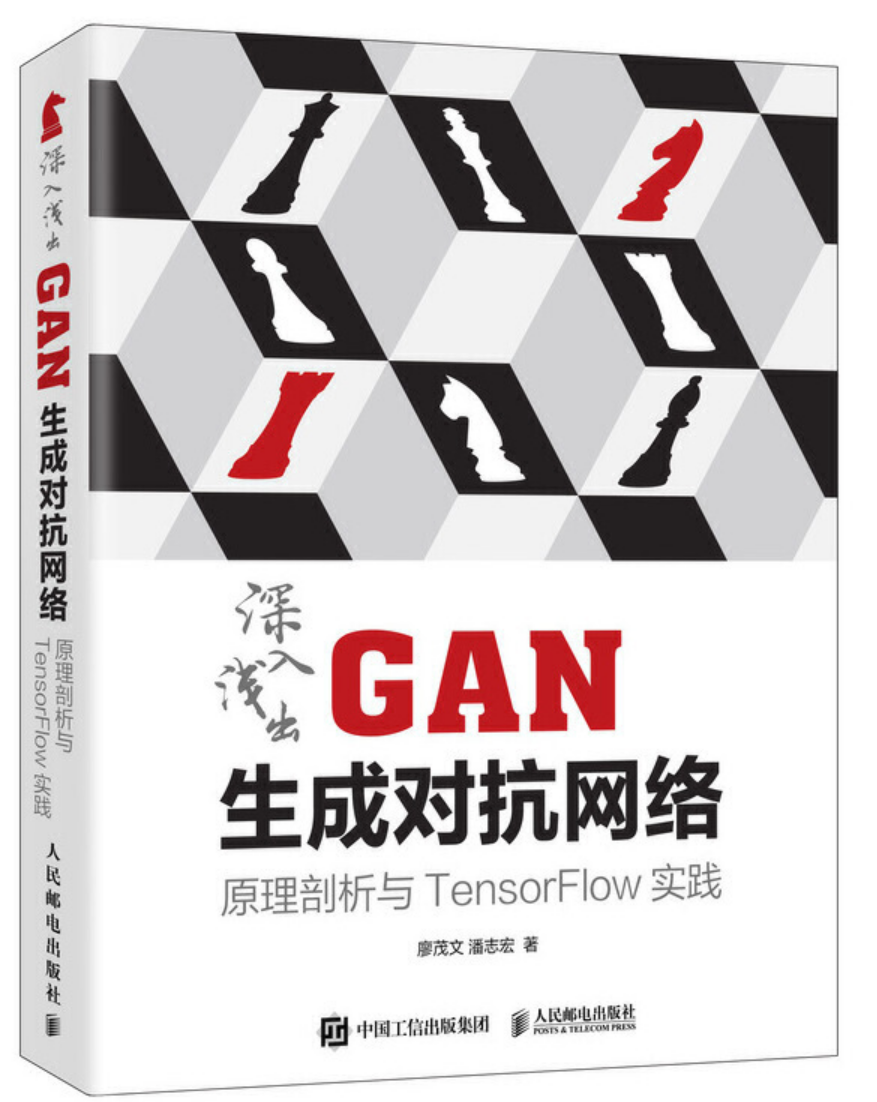人脸106点Caffe模型如何部署到MsnhNet
❝【GiantPandaCV导语】大家好,今天为大家介绍一下如何部署一个人脸106关键点模型到MsnhNet上,涉及到Caffe和Pytorch,MsnhNet模型转换,融合BN简化网络和如何编写MsnhNet预测代码等等。
❞
1. 前言
之前,MsnhNet主要支持了将Pytorch模型转换为MsnhNet框架可以运行的模型文件(*.msnhnet和*.bin),并且我们在之前的Pytorch转Msnhnet模型思路分享文章中分享了这个转换的思路。
最近尝试部署一个开源的人脸106点Caffe模型(https://github.com/dog-qiuqiu/MobileNet-Yolo/tree/master/yoloface50k-landmark106)到MsnhNet中,所以这篇文章就记录了我是如何将这个Caffe模型转换到MsnhNet并进行部署的。
2. 通用的转换思路
由于我们已经在Pytroch2Msnhnet这个过程上花费了比较大的精力,所以最直接的办法就是直接将Caffe模型转为Pytorch模型,然后调用已有的Pytorch2Msnhnet工具完成转换,这样是比较快捷省事的。
我参考https://github.com/UltronAI/pytorch-caffe这个工程里面的caffe2pytorch工具新增了一些上面提到的yoloface50k-landmark106关键点模型要用到的OP,如PReLU,nn.BatchNorm1D以及只有2个维度的Scale层等,例如将Scale层重写为:
class Scale(nn.Module):
def __init__(self, channels):
super(Scale, self).__init__()
self.weight = Parameter(torch.Tensor(channels))
self.bias = Parameter(torch.Tensor(channels))
self.channels = channels
# Python 有一个内置的函数叫 repr,它能把一个对象用字符串的形式表达出来以便辨认,这就是“字符串表示形式”
def __repr__(self):
return 'Scale(channels = %d)' % self.channels
def forward(self, x):
# landmark网络最后的全连接层后面接了Scale,所以需要考虑Scale层输入为2维的情况
if x.dim() == 2:
nB = x.size(0)
nC = x.size(1)
x = x * self.weight.view(1, nC).expand(nB, nC) + \
self.bias.view(1, nC).expand(nB, nC)
else:
nB = x.size(0)
nC = x.size(1)
nH = x.size(2)
nW = x.size(3)
x = x * self.weight.view(1, nC, 1, 1).expand(nB, nC, nH, nW) + \
self.bias.view(1, nC, 1, 1).expand(nB, nC, nH, nW)
return x
可以看到这个Caffe里面的Scale层Pytorch是不原生支持的,这是Caffe特有的层,所以这里写一个Scale类继承nn.Module来拼出一个Scale层。除了Scale层还有其它的很多层是这种做法,例如Eletwise层可以这样来拼:
class Eltwise(nn.Module):
def __init__(self, operation='+'):
super(Eltwise, self).__init__()
self.operation = operation
def __repr__(self):
return 'Eltwise %s' % self.operation
def forward(self, *inputs):
if self.operation == '+' or self.operation == 'SUM':
x = inputs[0]
for i in range(1,len(inputs)):
x = x + inputs[i]
elif self.operation == '*' or self.operation == 'MUL':
x = inputs[0]
for i in range(1,len(inputs)):
x = x * inputs[i]
elif self.operation == '/' or self.operation == 'DIV':
x = inputs[0]
for i in range(1,len(inputs)):
x = x / inputs[i]
elif self.operation == 'MAX':
x = inputs[0]
for i in range(1,len(inputs)):
x =torch.max(x, inputs[i])
else:
print('forward Eltwise, unknown operator')
return x
介绍了如何在Pytorch中拼凑出Caffe的特有层之后,我们就可以对Caffe模型进行解析,然后利用解析后的层关键信息完成Caffe模型到Pytorch模型的转换了。解析Caffe模型的代码实现在https://github.com/msnh2012/Msnhnet/blob/master/tools/caffe2Msnhnet/prototxt.py文件,我们截出一个核心部分说明一下,更多细节读者可以亲自查看。
我们以一个卷积层为例,来理解一下这个Caffe模型中的prototxt解析函数:
layer {
name: "conv1_conv2d"
type: "Convolution"
bottom: "data"
top: "conv1_conv2d"
convolution_param {
num_output: 8
bias_term: false
group: 1
stride: 2
pad_h: 1
pad_w: 1
kernel_h: 3
kernel_w: 3
}
}
解析prototxt文件的代码实现如下,结合上面卷积层的prototxt表示和下面代码的注释应该很好理解:
def parse_prototxt(protofile):
# caffe的每个layer以{}包起来
def line_type(line):
if line.find(':') >= 0:
return 0
elif line.find('{') >= 0:
return 1
return -1
def parse_block(fp):
# 使用OrderedDict会根据放入元素的先后顺序进行排序,所以输出的值是排好序的
block = OrderedDict()
line = fp.readline().strip()
while line != '}':
ltype = line_type(line)
if ltype == 0: # key: value
#print line
line = line.split('#')[0]
key, value = line.split(':')
key = key.strip()
value = value.strip().strip('"')
if key in block:
if type(block[key]) == list:
block[key].append(value)
else:
block[key] = [block[key], value]
else:
block[key] = value
elif ltype == 1: # 获取块名,以卷积层为例返回[layer, convolution_param]
key = line.split('{')[0].strip()
# 递归
sub_block = parse_block(fp)
block[key] = sub_block
line = fp.readline().strip()
# 忽略注释
line = line.split('#')[0]
return block
fp = open(protofile, 'r')
props = OrderedDict()
layers = []
line = fp.readline()
counter = 0
while line:
line = line.strip().split('#')[0]
if line == '':
line = fp.readline()
continue
ltype = line_type(line)
if ltype == 0: # key: value
key, value = line.split(':')
key = key.strip()
value = value.strip().strip('"')
if key in props:
if type(props[key]) == list:
props[key].append(value)
else:
props[key] = [props[key], value]
else:
props[key] = value
elif ltype == 1: # 获取块名,以卷积层为例返回[layer, convolution_param]
key = line.split('{')[0].strip()
if key == 'layer':
layer = parse_block(fp)
layers.append(layer)
else:
props[key] = parse_block(fp)
line = fp.readline()
if len(layers) > 0:
net_info = OrderedDict()
net_info['props'] = props
net_info['layers'] = layers
return net_info
else:
return props
然后解析CaffeModel比较简单,直接调用caffe提供的接口即可,代码实现如下:
def parse_caffemodel(caffemodel):
model = caffe_pb2.NetParameter()
print ('Loading caffemodel: '), caffemodel
with open(caffemodel, 'rb') as fp:
model.ParseFromString(fp.read())
return model
解析完Caffe模型之后,我们就拿到了所有Layer的参数信息和权重,我们只需要将其对应放到Pytorch实现的Layer就可以了,这部分的代码实现就是https://github.com/msnh2012/Msnhnet/blob/master/tools/caffe2Msnhnet/caffenet.py#L332这里的CaffeNet类这里就不再过多解释了,因为这仅仅是一个构件Pytorch模型并加载权重的过程,相信熟悉Pytorch的同学不难看懂和写出这部分代码。执行完这个过程之后我们就可以获得Caffe模型对应的Pytorch模型了。
3. 精简网络
为了让Pytorch模型转出来的MsnhNet模型推理更快,我们可以考虑在Caffe转到Pytorch模型时就精简一些网络层,比如常规的Convolution+BN+Scale可以融合为一个层。我们发现这里还存在一个FC+BN+Scale的结构,我们也可以一并融合了。这里可以再简单回顾一下融合的原理。
3.1 融合BN原理介绍
「我们知道卷积层的计算可以表示为:」
「然后BN层的计算可以表示为:」
「我们把二者组合一下,公式如下:」
然后令
「那么,合并BN层后的卷积层的权重和偏置可以表示为:」
这个公式同样可以用于反卷积,全连接和BN+Scale的组合情况。
3.2 融合BN
基于上面的理论,我们可以在转Caffe模型之前就把BN融合掉,这样我们在MsnhNet上推理更快(另外一个需要融合的原因是目前MsnhNet的图优化工具还在开发中,暂时不支持带BN+Scale层的融合)。Caffe模型融合的代码我放在https://github.com/msnh2012/Msnhnet/blob/master/tools/caffe2Msnhnet/caffeOptimize/caffeOptimize.py这里了,简要介绍如下:

4. MsnhNet推理
精简网络之后我们就可以重新将没有BN的Caffe模型转到Pytorch再转到MsnhNet了,这部分的示例如下:
# -*- coding: utf-8
# from pytorch2caffe import plot_graph, pytorch2caffe
import sys
import cv2
import caffe
import numpy as np
import os
from caffenet import *
import argparse
import torch
from PytorchToMsnhnet import *
################################################################################################
parser = argparse.ArgumentParser(description='Convert Caffe model to MsnhNet model.',
formatter_class=argparse.ArgumentDefaultsHelpFormatter)
parser.add_argument('--model', type=str, default=None)
parser.add_argument('--weights', type=str, default=None)
parser.add_argument('--height', type=int, default=None)
parser.add_argument('--width', type=int, default=None)
parser.add_argument('--channels', type=int, default=None)
args = parser.parse_args()
model_def = args.model
model_weights = args.weights
name = model_weights.split('/')[-1].split('.')[0]
width = args.width
height = args.height
channels = args.channels
net = CaffeNet(model_def, width=width, height=height, channels=channels)
net.load_weights(model_weights)
net.to('cpu')
net.eval()
input=torch.ones([1,channels,height,width])
model_name = name + ".msnhnet"
model_bin = name + ".msnhbin"
trans(net, input,model_name,model_bin)
获得了MsnhNet的模型文件之后,我们就可以使用MsnhNet进行推理了,推理部分的代码在https://github.com/msnh2012/Msnhnet/blob/master/examples/landmark106/landmark106.cpp。
我们来看看效果,随便拿一张人脸图片来测试一下:


landmark的结果还是比较正确的,另外我们对比了Caffe/Pytorch/MsnhNet的每层特征值,Float32情况下相似度均为100%,证明我们的转换过程是正确的。
我们在「X86 CPU」 i7 10700F上测一下速度(float32推理),结果如下:
| 分辨率 | 线程数 | 时间 |
|---|---|---|
| 112x112 | 1 | 5ms |
| 112x112 | 2 | 3.5ms |
| 112x112 | 4 | 2.7ms |
速度还是挺快的,由于本框架目前在x86没有太多优化,所以这个速度后面会进一步优化的。感兴趣的读者也可以测试在其它平台上这个模型的速度。
5. 转换工具支持的OP和用法
5.1 介绍
Caffe2msnhnet工具首先将你的Caffe模型转换为Pytorch模型,然后调用Pytorch2msnhnet工具将Caffe模型转为*.msnhnet和*.bin。
5.2 依赖
Pycaffe Pytorch
5.3 计算图优化
在调用
caffe2msnhnet.py之前建议使用caffeOPtimize文件夹中的caffeOptimize.py对原始的Caffe模型进行图优化,目前已支持的操作有:Conv+BN+Scale 融合到 Conv
Deconv+BN+Scale 融合到Deconv
InnerProduct+BN+Scale 融合到InnerProduct
5.4 Caffe2Pytorch支持的OP
Convolution 转为 nn.Conv2dDeconvolution 转为 nn.ConvTranspose2dBatchNorm 转为 nn.BatchNorm2d或者nn.BatchNorm1dScale 转为 乘/加ReLU 转为 nn.ReLULeakyReLU 转为 nn.LeakyReLUPReLU 转为 nn.PReLUMax Pooling 转为 nn.MaxPool2dAVE Pooling 转为 nn.AvgPool2dEltwise 转为 加/减/乘/除/torch.maxInnerProduct 转为 nn.LinearNormalize 转为 pow/sum/sqrt/加/乘/除拼接Permute 转为 torch.permuteFlatten 转为 torch.viewReshape 转为 numpy.reshape/torch.from_numpy拼接Slice 转为 torch.index_selectConcat 转为 torch.catCrop 转为 torch.arange/torch.resize_拼接Softmax 转为 torch.nn.function.softmax
5.5 Pytorch2Msnhnet支持的OP
conv2d max_pool2d avg_pool2d adaptive_avg_pool2d linear flatten dropout batch_norm interpolate(nearest, bilinear) cat elu selu relu relu6 leaky_relu tanh softmax sigmoid softplus abs acos asin atan cos cosh sin sinh tan exp log log10 mean permute view contiguous sqrt pow sum pad +|-|x|/|+=|-=|x=|/=|
5.6 使用方法举例
python caffe2msnhnet --model landmark106.prototxt --weights landmark106.caffemodel --height 112 --width 112 --channels 3,执行完之后会在当前目录下生成lanmark106.msnhnet和landmark106.bin文件。
6. 总结
至此,我们完成了yoloface50k-landmark106在MsnhNet上的模型转换和部署测试,如果对本框架感兴趣可以尝试部署自己的一个模型试试看,如果转换工具有问题请在github提出issue或者直接联系我们。点击阅读原文可以快速关注MsnhNet,这是我们业余开发的一个轻量级推理框架,如果对模型部署和算法优化感兴趣的读者可以看看,我们也会在GiantPandaCV公众号分享我们的框架开发和算子优化相关的经历。
7. 参考
https://github.com/UltronAI/pytorch-caffe https://github.com/msnh2012/Msnhnet
为了感谢读者们的长期支持,我们今天将送出3本由人民邮电出版社提供的《深入浅出 GAN 生成对抗网络》书籍,感兴趣的小伙伴可以在下方留言板留言,我们将从中抽取几位小伙伴分别送出一本正版书籍。

没中奖并且对本书也感兴趣的小伙伴可以考虑点击下方的当当网链接自行购买:
欢迎关注GiantPandaCV, 在这里你将看到独家的深度学习分享,坚持原创,每天分享我们学习到的新鲜知识。( • ̀ω•́ )✧
有对文章相关的问题,或者想要加入交流群,欢迎添加BBuf微信:
为了方便读者获取资料以及我们公众号的作者发布一些Github工程的更新,我们成立了一个QQ群,二维码如下,感兴趣可以加入。
